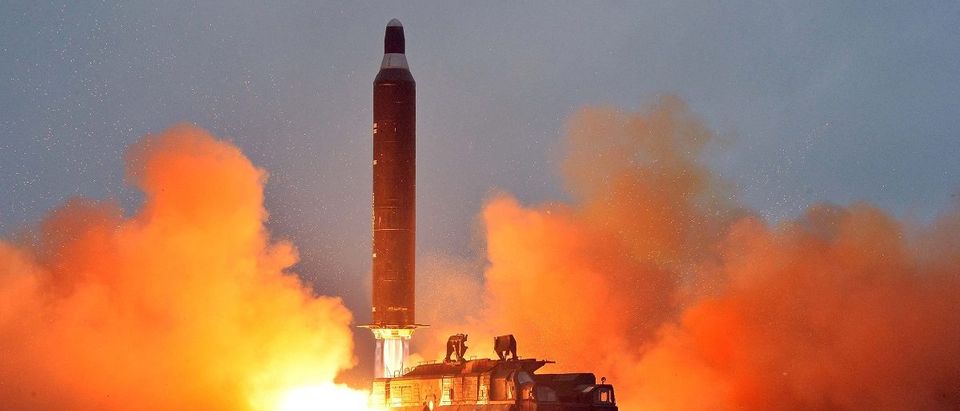North Korea conducted its second failed ballistic missile test in a week Thursday, reports U.S. Strategic Command (USSTRATCOM).
The launch took place in Kusong at around 6:30 A.M. Pyongyang time. Initial assessments indicate that the missile was a Musudan intermediate-range ballistic missile (IRBM).
The Musudan IRBM is believed to have a range of about 2,500 miles, making it capable of delivering a nuke to Guam — though there’s been no evidence the rogue regime has mastered the technology required to mount a warhead to a missile.
At the moment, though, North Korea is still having trouble getting its missile in the air, which is good news for the North’s long list of enemies.
The bad news is that the frequency of tests and the choice of launch site indicate that Pyongyang has made its IRBM a strategic priority and intends to have it combat ready as soon as possible.
North Korea has tested its Musudan missile eight times this year. The Saturday test made seven in seven months, an already impressive rate. Now, North Korea has conducted two tests in less than a week. The trend is clearly not a propaganda stunt, for if it were, Pyongyang would have stopped after its one successful test in June. North Korea’s intent to master the technology is clear.
“Amateurs practice until they get it right, but professionals practice until they can’t get it wrong. The North Koreans have just shown that they can still get it wrong, [so] they are still practicing,” John Schilling, aerospace engineer and North Korean missile expert, noted on the U.S.-Korea Institute’s 38 North blog.
The location of the launch is also worth noting. Musudan is not the North Korean name for their IRBM; rather, it is the U.S. name for it. They call the missile the Hwasong-10. The U.S. named it after the Musudan-ri launch site, where the majority of the Musudan tests have taken place. The last two missiles were tested in Kusong, which marks a clear shift in North Korean behavior.
While there is the possibility that Pyongyang simply wanted the option of testing out the missile’s range without penetrating another country’s airspace, the North may also be interested in seeing if the military can successfully fire the missile without tech support immediately on hand. At the new location, North Korea could launch the missile and witness its full capabilities. Launched towards the south, the missile could travel around 3,000 kilometers before falling into the sea. The new site also allows the Korean People’s Army to ensure that the missile could be deployed in combat through standardized field tests.
Kusong is a particularly secure location and may be the future launch site for the Musudan.
Its IRBM is not North Korea’s only project right now. There has been increased activity at the Sohae Satellite Launching Station. The North has stated that it intends to launch more satellites; however, these launches are largely regarded as tests of long-range missile technology.
Send tips to ryan@
All content created by the Daily Caller News Foundation, an independent and nonpartisan newswire service, is available without charge to any legitimate news publisher that can provide a large audience. All republished articles must include our logo, our reporter’s byline and their DCNF affiliation. For any questions about our guidelines or partnering with us, please contact licensing@dailycallernewsfoundation.org.


